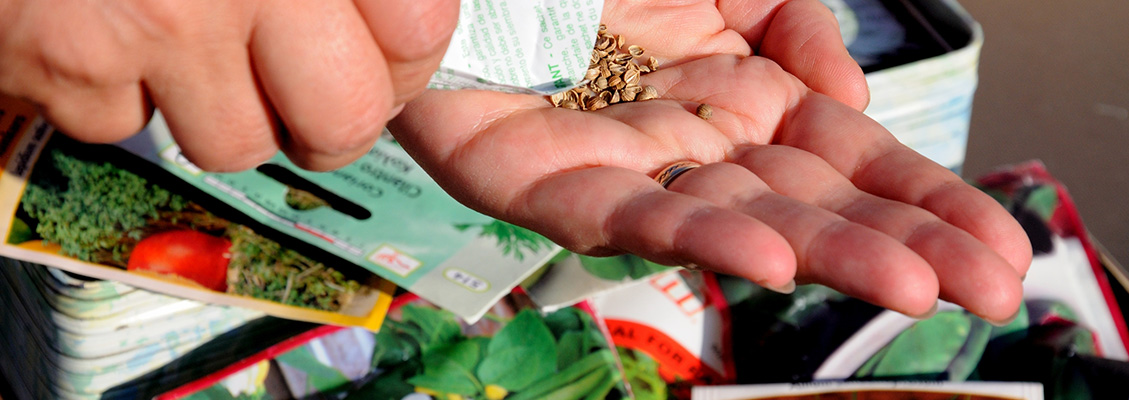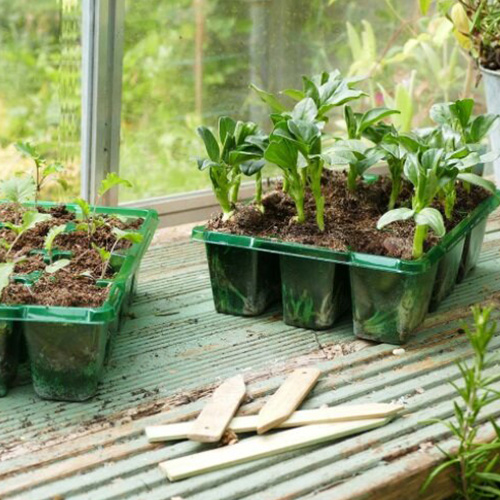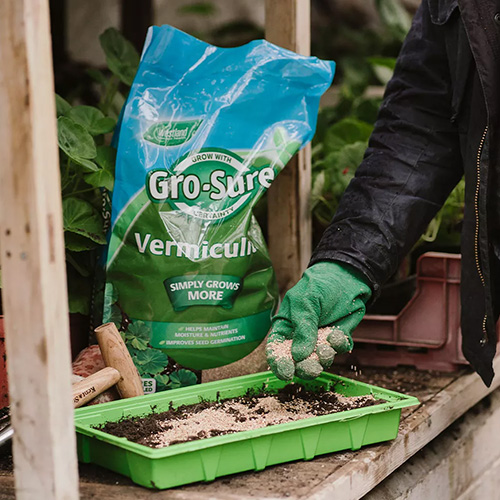Seeds and propagation Guide
Most plants can be grown from seed but most of us stick to annuals, for filling out borders and vegetables.
Some seeds can be sown direct, where they are to grow and, for most of these, sowing is delayed until Mid-March, with the majority sown in April and others later into May. But some plants need a longer growing season than we have outdoors and we start them, in the greenhouse or on the windowsill, a little earlier. These include early crops of cabbage, lettuce and cauliflowers as well as frost-tender crops like tomatoes and flowers that are classified as ‘half hardy annuals’ (HHA).
Unless you have a heated greenhouse it is best not to sow too early. You need to think where you are going to put all the seedlings once they are up and transplanted into trays.
To start your seeds indoors you need minimal equipment.
Trays and pots
It is essential that any containers are clean. Dirty pots will spread disease and can cause death of seedlings. If using old trays and pots, make sure they are washed and are clean. Containers for seedlings do not need to be deep ‘cell trays’ are ideal but you can use standard seed trays.
Compost
It is essential that you use clean, fresh compost. Do not use old bags that have been open and outside over winter because they can be wet and contaminated with seeds or disease. Buy good quality compost, you will not need much for seed sowing but will need a lot more when you transplant the seedlings.
Propagators
In the most basic form a propagator is just a clear lid that maintains humidity around the seeds. Most seeds need ‘artificial’ heat to germinate in early spring so a heated propagator is an advantage. The most basic provide steady heat once switched on but if the room is warm or the sun shines on them the temperature can become excessive so one with a thermostat is an advantage. Placing an unheated propagator on a windowsill above a radiator may work for some seeds but because the radiators may be ‘off’ at night the temperature of the compost may fluctuate wildly and this will not suit some ‘difficult’ seeds.
Vermiculite
Most seeds benefit from being covered after sowing. But some seeds need light to germinate. For this reason it is a good idea to cover most seeds with perlite or vermiculite after sowing. It is clean and easy to lightly cover seeds without the need for a sieve. You can also mix it with compost to improve drainage for plants that hate waterlogging like gazanias, rudbeckias and asters
Labels
Never be fooled into thinking you will remember the names of all your seeds if you don’t label them. Get some new labels so you can mark the seed trays immediately with the name of the plant, date of sowing and, perhaps, number of seeds and seed company.



